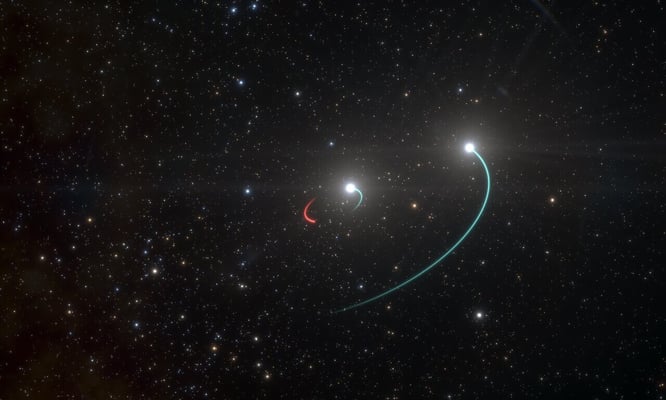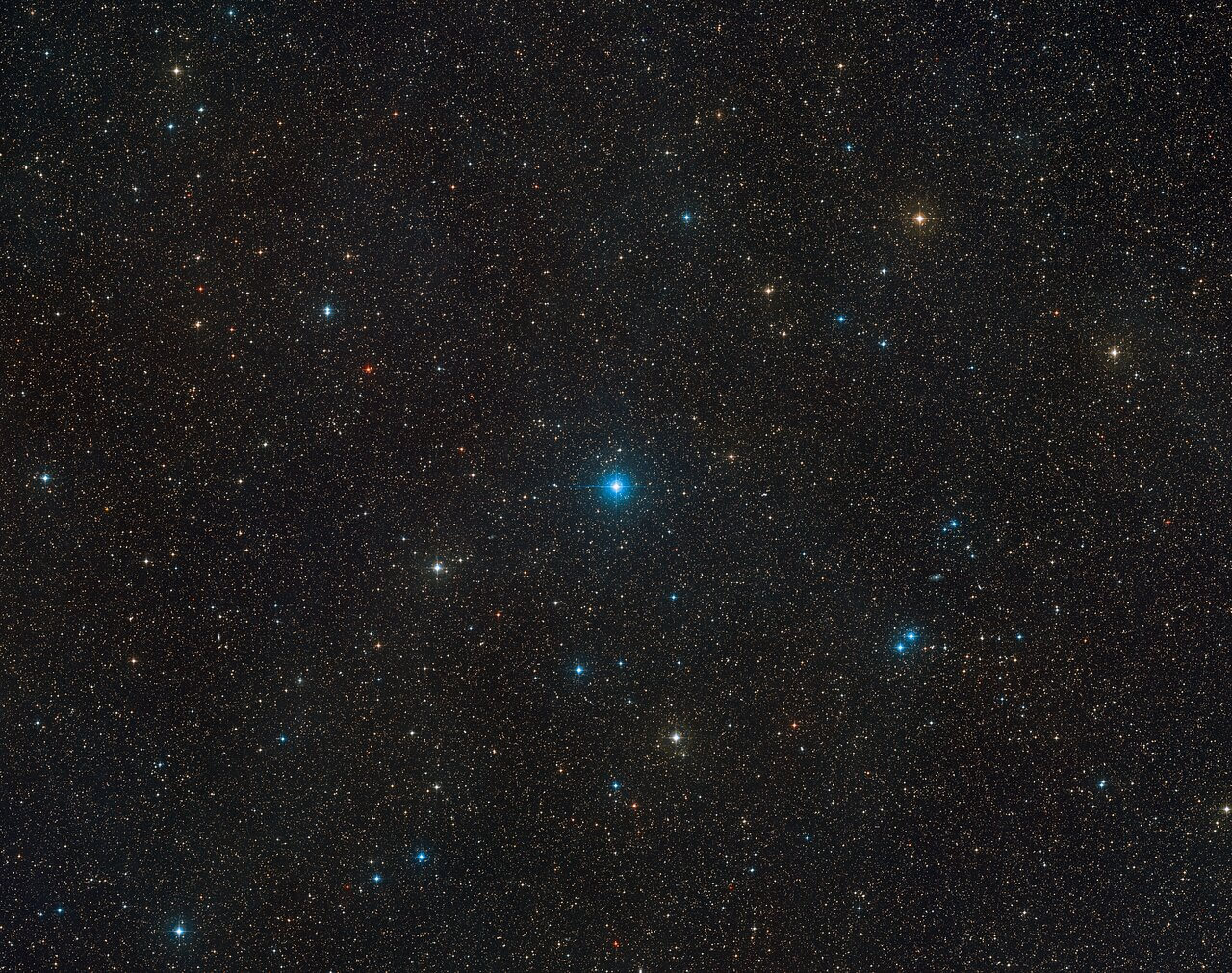Recently Discovered Black hole is the Closest Black hole from Earth

Artist’s impression of the triple system with the closest black hole. Image © European Southern Observatory (ESO).
Astronomers from European Southern Observatory (ESO) and other collaborative institutes discovered a new candidate in their search for the nearest black hole to Earth. They claimed that the newly discovered black hole system has two companions and what more interesting is that those stars are visible to the naked eye, a clear night without binoculars or a telescope, from the Earth- assuming you have access to the southern sky on a dark night.
Petr Hadrava, Emeritus Scientist at the Academy of Sciences of the Czech Republic in Prague and co-author of the research said, "We were totally surprised when we realized that this is the first stellar system with a black hole that can be seen with the unaided eye."
As we may know that the black hole is not directly visible. For the detection of the black hole, we have to infer to other environments of the black holes like the star lurking around it or the gravitational waves, and the gravitational effects.
Related: If We Can't see Black Holes, How are they Detected?
When a star system approaches a black hole, certain regions around a black hole can brighten, flaring as superheated dust and gas swirl down to oblivion.
ESO astronomers say that they have made just such an observation and claimed that maybe the closest known black hole to Earth. They mentioned that the observed black hole system, located in the constellation of Telescopium, lies closer to our Solar System than any other found to date and forms part of a triple system that can be seen with the naked eye.
Thomas Rivinius, an ESO scientist said, "This system [HR 6819] contains the nearest black hole to Earth that we know of."
The observations enabling this recent discovery were actually performed over several months back in 2004. Researchers originally observed the HR 6819 system for their study of a binary star system.

Astronomers used the Fiber-fed Extended Range Optical Spectrograph (FEROS) that is installed at MPG/ESO 2.2-metre telescope at the ESO’s La Silla Observatory in Chile to make the discovery. As they analyzed the observational data, they found a previously undiscovered black hole in HR 6819 and they were staggered.
Their observation showed that one of the two visible stars orbits an unseen object every 40 days, while the second star is at a large distance from this inner pair.
"The observations needed to determine the period of 40 days had to be spread over several months. This was only possible thanks to ESO’s pioneering service-observing scheme under which observations are made by ESO staff on behalf of the scientists needing them," Dietrich Baade, Emeritus Astronomer at ESO in Garching and co-author of the study said.
This new hidden black hole revealed new observation for the astronomers. The hidden black hole in HR 6819 is a stellar-mass black hole and it is almost black as no one cares as if there is a black hole.
This stellar-mass black hole does not act violently with its environment and therefore there exist no such visible effective flares of light or the emission of X-rays that arise due to the dragging of the components by the black hole. This makes the black hole really black. But observing the system for several months, astronomers were able to map out the stars' orbits and spot the presence another massive, unseen object must be acting in the system. They finally calculated the mass of the hidden black hole by studying the orbit of the star in the inner pair.
This discovery of a silent black hole at HR 6819 really provides a first clue about where maybe the hidden black holes may present at the Milky Way galaxy. Rivinius said, "There must be hundreds of millions of black holes out there, but we know about only very few. Knowing what to look for should put us in a better position to find them."
Already astronomers are on a suspect that a nearly second system may have alike triple system. Marianne Heida, a postdoctoral fellow at ESO and co-author of the paper said, "We realized that another system, called LB-1, may also be such a triple, though we'd need more observations to say for sure." Heida added, "LB-1 is a bit further away from Earth but still pretty close in astronomical terms, so that means that probably many more of these systems exist. By finding and studying them we can learn a lot about the formation and evolution of those rare stars that begin their lives with more than about 8 times the mass of the Sun and end them in a supernova explosion that leaves behind a black hole."
Also, based on the supposed ages of the system's two remaining stars, researchers believe that the black hole in the HR 6819 system is the result of a star there exploding as a supernova tens of millions of years ago.
With the calculations, the team concludes that a hard lower limit on the mass of the unseen object is 4.2 solar mass and this lies just 1000 light-years from Earth.
A paper describing the research work was published in the journal Astronomy & Astrophysics on 22 April 2020.
